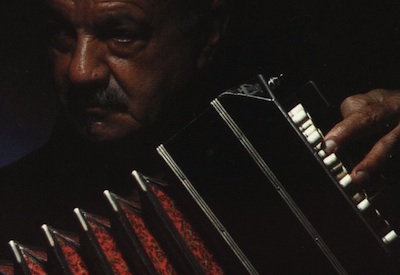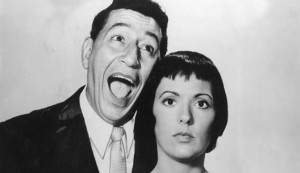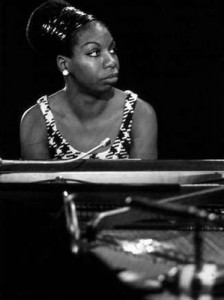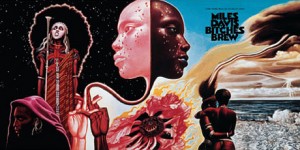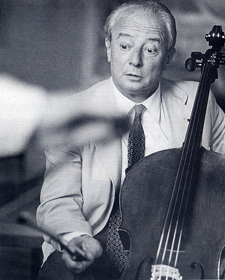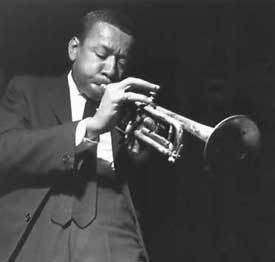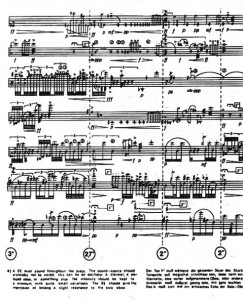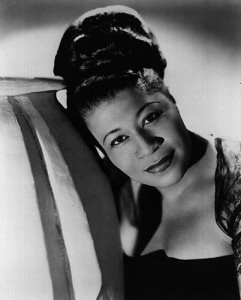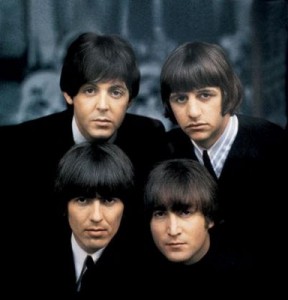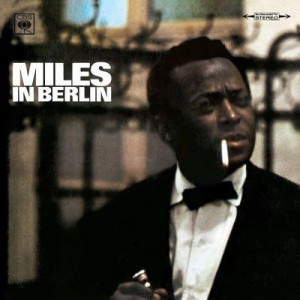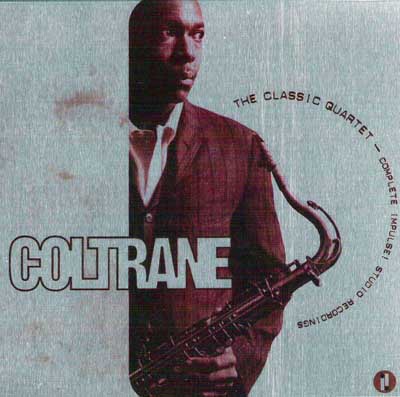 Where yesterday’s entry had me being nostalgic about the packaging of Astor Piazzolla’s last few discs, tonight’s packaging covers the other end of the spectrum. John Coltrane’s ‘The Classic Quartet – Complete Impulse! Studio Recordings’ appears to be a packaging marvel. A metallic sheath around a brown leather binder that holds a huge stack of discs.
Where yesterday’s entry had me being nostalgic about the packaging of Astor Piazzolla’s last few discs, tonight’s packaging covers the other end of the spectrum. John Coltrane’s ‘The Classic Quartet – Complete Impulse! Studio Recordings’ appears to be a packaging marvel. A metallic sheath around a brown leather binder that holds a huge stack of discs.
It is, without a doubt, the clumsiest package of CDs I have. The leather sticks (and holds on with a firm grip) to the metal. You have to pry the metal off the leather unless you have done so within the last 30 minutes. It then folds out to 4 (!) leather panels, one which has a booklet attached to it. But when I say attached, what I really mean is that it basically lacks all the adhesive quality that the leather / metal combo has. We’re talking a little bit of rubber cement holding a paper backing to leather.
Then there is what is actually in the box. ‘The Classic Quartet – Complete Impulse! Studio Recordings’ is quite literal… No live recordings of this amazing group (because the word ‘studio’ is in the title). The tracks are sometimes separated from longer complete albums where another performer may have sat in for a tune or two. So this box is in no way a complete set of Coltrane’s work on Impulse!, even during the time span it covers. Unlike other box sets it you don’t get the benefit of avoiding the purchase of the full discs. I bought this set the day it came out (eager to hear some of the bonus tracks of outtakes and to, I thought, fill out a few missing discs). But apparently I didn’t parse the words on the metal cover closely enough! In the ‘book of notes where the binding shall not break and the owner will never read the text against the margin’ there are a few comments about how special the years 1961-65 were for Coltrane, Jimmy Garrison, McCoy Tyner and Elvin Jones (and ONLY THESE FOUR PEOPLE!) were. So – the label knew it was pulling a fast one, and finds ways to apologize for it in the booklet.
But – enough whining about packaging / marketing. When Mira and her love of all things box-set pointed to this collection tonight I was quite happy. I will not miss this packaging, but will GREATLY enjoy the new easy access to this music. Sure, there are tracks missing from this set, but as my collection moves to the level beyond CDs and 74 minute time limits that will all disappear. Sure – I will have two copies of ‘A Love Supreme’ on my computer – the one from this set and the one that will later come from the Impulse! re-issue (that also contains outtakes with an expanded performer line-up). But it is ‘A Love Supreme’ that is taking that space up twice!!! One of the greatest musical monuments of 20th century music! And this is only the case if I don’t spend the 20 seconds it would take to remove the duplicate files… Really, tonight is one of the night’s where I really see how pulling everything off disc and onto the computer is a great move.
Coltrane is, simply put, one of my favorite musicians. And I might have more Coltrane then anyone else except for Beethoven and Bach. I would hunt for live recordings when I worked at Tower and am still surprised how much I paid for a few of them. I could probably write a couple hundred pages on Coltrane and how he has figured in my life as a musician and on a personal level. His music figures into some of my most vivid memories that are linked with music. It wouldn’t be hard for me to make a ‘Top Ten list of Coltrane memories’ and find that a good amount of those memories are in the ‘Top Ten memories of my life so far up to 35’ list. Lots of crossover. Partly because he is one of the musicians I have listened to more then just about any other musician (so, even by coincidence, there would be crossover) but also because Coltrane is usually on when I am feeling good or confident or in need of energy or in need of inspiration or in need of abandon or in need of mental stimulation or … the list can go on. He is a beautiful performer, and there are few others in recorded history who show such a sense of trajectory and evolution throughout their entire career. Listening to Coltrane is like listening to Beethoven. A few moments of his playing and I can usually tell it is him and about when the performance was recorded and often who he is playing with. He constantly challenged himself musically and personally and it is exciting to have recordings that give us a glimpse of that growth.
As I mentioned above the box covers the years 1961-65. All were recorded in Rudy Van Gelder’s studio in New Jersey. I have pretty much all this music on other discs that I will be pulling off later in this project (even a couple tomorrow that were next to the box-set that Mira chose) so I will spend much more time in the future talking about the music. But for now I am going to leave off with just what I have said above. All that while I listen to ‘Out Of This World’ originally released on the album ‘Coltrane’. This was recorded in 1961. Some of the stretching out in Coltrane’s playing is really beginning to come out in these recordings (which happen after his years with Atlantic which are smoother performance wise). There is the occasional ‘honk’ and ‘growl’ that was already appearing in his live performances (but rarely in his studio recordings). He is surrounded by three of the most amazing musicians he would ever record with, and that is saying something when you consider the legends Coltrane performed with! Playing a track of ‘Coltrane’ then jumping ahead to some of the tracks that would appear in ’65 on ‘Sun Ship’ really shows how Coltrane changed and grew in four years. There is almost 9 hours of music in this set – and it is a thrilling ride.


